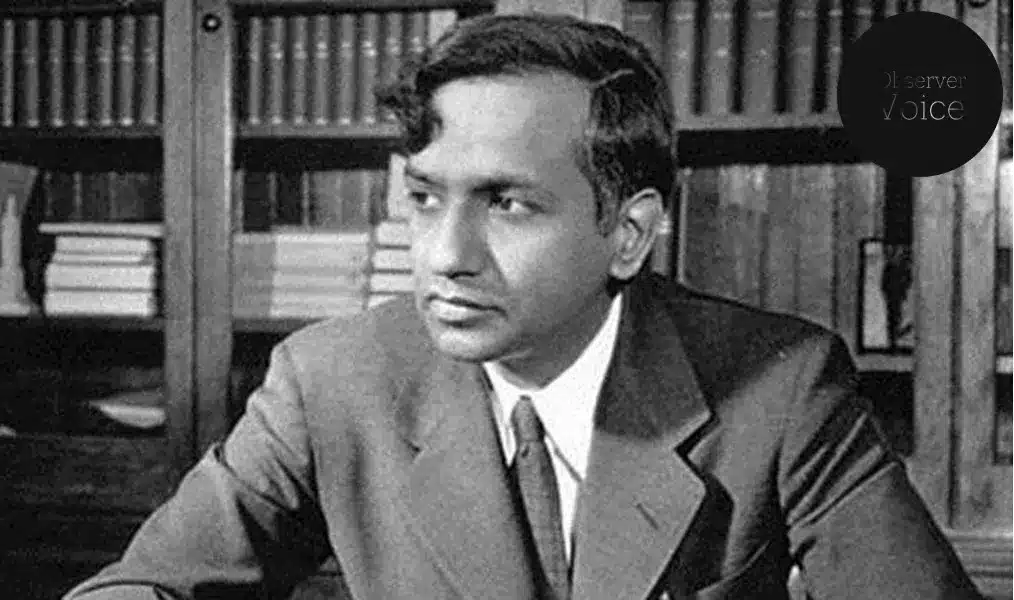Subrahmanyan Chandrasekhar: Illuminating the Mysteries of the Stars

Subrahmanyan Chandrasekhar (19 October 1910 – 21 August 1995) was an Indian American astrophysicist who spent his professional life in the United States. He won the 1983 Nobel Prize for Physics with William A. Fowler.
Life and Career
Subrahmanyan Chandrasekhar was born on 19 October 1910, in Punjab, British India. Chandrasekhar was tutored at home until he was 12. He was taught Mathematics and Physics by his father and Tamil by his mom in middle school. From 1922 to 1925, he attended Hindu High School, Triplicane, Madras. Later, he studied at Presidency College, Madras from 1925 to 1930, where he wrote his first paper, “The Compton Scattering and the New Statistics“, inspired by Arnold Sommerfeld’s lecture. He graduated in June 1930 with a BSc (Hons) in physics. In 1930, Chandrasekhar received a government scholarship to study at Cambridge, where he was admitted to Trinity College. When Chandrasekhar was in England, he worked out the statistical mechanics of the degenerate electron gas in white dwarf stars, providing relativistic corrections to Fowler’s previous work.
By the early 1930s, scientists realized that stars lose energy and contract after converting all their hydrogen to helium. These stars, also known as white dwarfs, shrink to about the size of Earth, and their electrons and nuclei are compressed to a high density. Chandrasekhar determined what is known as the Chandrasekhar limit— that a star having a mass more than 1.44 times that of the Sun does not form a white dwarf but instead continues to collapse, blows off its gaseous envelope in a supernova explosion, and becomes a neutron star. The star continues to collapse and becomes a black hole. Eventually, these calculations led to a better understanding of supernovas, neutron stars, and black holes. During his 1930 trip to England, Chandrasekhar came up with the idea of a limit. Although his ideas got strong opposition, particularly from English astronomer Arthur Eddington, it took years before they were generally accepted.
Chandrasekhar became a U.S. citizen in 1953, after becoming an assistant professor of astrophysics at the University of Chicago (1938).
Among his most significant work was on the transfer of energy by radiation in stellar atmospheres and convection on the surface of the sun. Also, he tried to develop a mathematical theory of black holes, which he described in The Mathematical Theory of Black Holes (1983).
He died on 21 August 1995, in Chicago, Illinois, U.S.
Award and Legacy
In 1983, Chandrasekhar and William A. Fowler won the Nobel Prize in Physics for their research on the structure and evolution of stars. In 1968, he received the Padma Vibhushan, the second-highest civilian award of India.
Read More: 17 October: Anil Kumble, former Indian cricketer.
Observer Voice is the one stop site for National, International news, Sports, Editor’s Choice, Art/culture contents, Quotes and much more. We also cover historical contents. Historical contents includes World History, Indian History, and what happened today. The website also covers Entertainment across the India and World.

